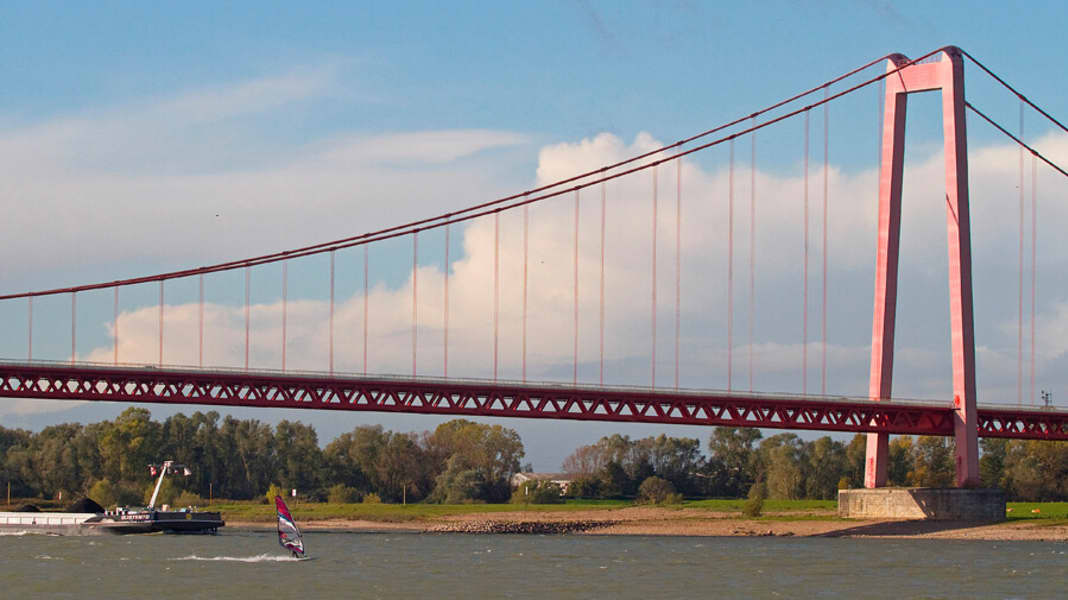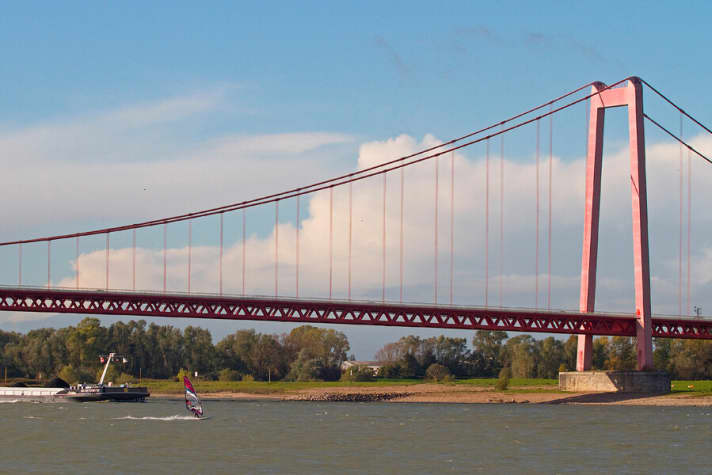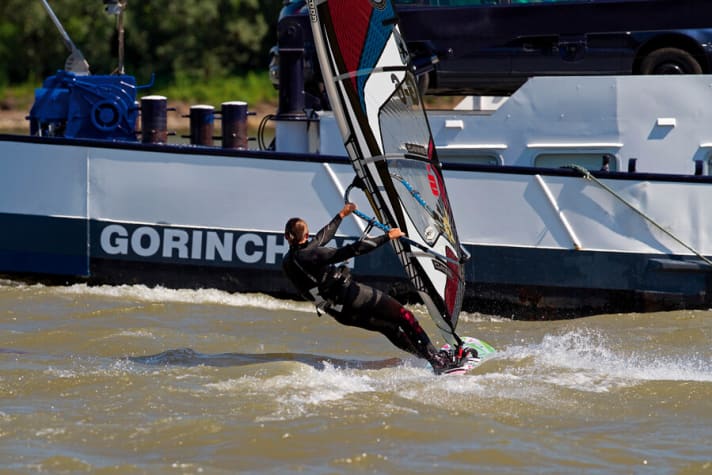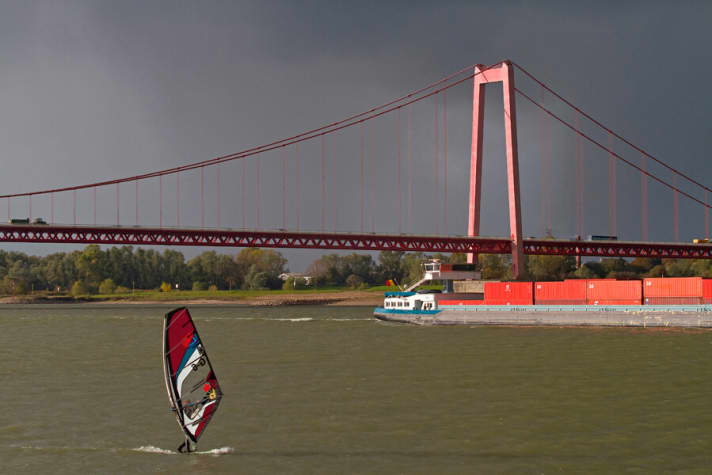

1999 - I'm on the phone with a good friend when I suddenly notice a strong change in myself. It takes me a few seconds to realise what's going on with me. Completely incoherent and therefore incomprehensible to my conversation partner, I say goodbye as if out of nowhere with the clear sentence: "I'll call you later", and just manage to hang up. Then everything happens very quickly and uncompromisingly, because my stomach alerts me to the need for action. I grab the rubbish bin that's right next to my desk. What follows is a three-hour ordeal in which I find it difficult to decide whether to sit in front of or on the loo. Then calm returns and I feel like I've been caught in a heavy storm. I feel better. I start to think about what caused this storm and it dawns on me, even though I don't really want to believe it, having spent my whole youth in the waters of the Rhine. I had taken a few windsurfing pictures on the Rhine the day before with a photographer friend and received the receipt straight away. The pictures were well received at the time, which justified my little intermezzo to a certain extent, but I didn't really feel compelled to sail freely any more. The quarry pond at home seemed more compatible.
Exactly ten years later, I meet some friends in Cologne and they tell me enthusiastically about their experiences on the Rhine. Their euphoria at finally having the opportunity to experience a few wonderful hours right on their doorstep infects me, and I decide to give the Rhine another chance after ten years of abstinence. Perhaps the often-heard promises that the Rhine now has much better water quality had a real background. Rhine surfing is something very special because the current, if it runs exactly against the wind, makes it possible to use sails that are sometimes up to 1.5 square metres smaller. This makes Rhine surfing not only more sporty, but also possible in much weaker winds, which gives you many additional windsurfing days.

So I sat in front of the computer to print out some courses of the Rhine on Google Map. After all, I had to find spots for the different wind directions in the old pioneering manner. Well prepared, I set off to give new meaning to the term "local history", as I was finally going to get to know the course of the Rhine in detail after 40 years on the Lower Rhine. All beginnings are difficult, as I soon realised that the access routes to my desired spots were regulated or closed, or didn't exist at all. Dead ends, nature reserves and a lack of access made life difficult for me. It took me a few days to complete my list of spots for the different wind directions. Then the wind finally arrived. Nervous and unsure, I rigged my sail and found myself casually scrutinising the passing push boats with respect and uncertainty.
I finally push my board into the water and the current pulls my stern to the side. Everything is different on the Rhine. The boats travelling downstream on the Rhine are right next to you the next moment. Those travelling against the current barely make any progress and sometimes block the spot for what feels like an eternity. That's exactly what Rhine surfing is all about, because waiting on the bank is actually part of it. The current is still moderate in the bank area and my board is therefore slow to pick up speed. I pass the Krippenkopf (Steinmolen) and immediately feel the increasing wind in my sail. It now feels almost overpowered. It's crazy, because I hardly noticed the wind on land. The wind is very constant for this reason, because it is actually a light wind that is only artificially amplified by the current.

The way is clear and the next ship is still a long way off. The water surface on the Rhine presents an unusual picture due to the current and the shipping traffic. Smooth surfaces and short cross waves mix with the choppy waves caused by the wind. I reach the other bank and in front of me is a mirror-smooth surface, protected by the cover of the cot lying to windward. It's a dream, because you rarely get to celebrate your manoeuvres on such smooth water.
Rhine surfing is fun, because the additional energy of the current opens up a whole new dimension that hardly allows you to return to the gusty quarry pond. I always tend to have to take a slight downwind course, as otherwise I'm pushed upwind by the current. It's crazy, when we usually have to fight for every metre of height. It's very relaxing. But you have to be careful, because I have to keep a constant eye on the boats and make sure that successful manoeuvres don't turn my head too much and I forget the dangers.
Then the wind breaks. I'm drifting along and the current has now carried me half a kilometre. I make sure that I reach the cover of the cots, as it is still possible to lose height here even in weaker conditions. I finally make it back to the starting point and am delighted with the successful premiere. A few days later, the wind is blowing from the south-west, which in our area only runs against the current near the Dutch city of Nijmegen.
I water my board. The Rhine has now merged into the Waal here. I set off, but only reach the opposite bank once. The water police suddenly park next to me and tell me in no uncertain terms that this kind of fun is not tolerated in Holland. Disappointed, I leave, as this information deprives me of my only option of a south-westerly wind. Despite this experience, I am incredibly happy about the rest of my spots, which I subsequently enjoy a lot.
It's just great and also unusual for me to experience such beautiful conditions within ten minutes of arriving home. But it's also unfortunate that I didn't realise it for so long out of ignorance. Of course, I surfed here ten years ago, but at the time I had an upset stomach and forgot about the benefits.
Some time later, I am once again travelling in perfect conditions when this time the German water police approach. They instruct me to leave the water. I am surprised and find out later, when I phone them, that this instruction is based on nature conservation. I am allowed to surf on the water, but not to access it via the beach path. The responsible authority had apparently already brought this regulation to the attention of the water police several times. So I went to the relevant office to present my request for a special permit. A tragedy ensued and even my pointing out that there was a model aerodrome on the site, a sewage treatment plant on the left and a chemical plant on the right, did not impress anyone. The reference to the 20 push boats and the ten anglers on site doesn't help either. Our friends, the anglers, obviously have a better lobby after all. But anyway, I've now found a few other spots outside the nature reserve, otherwise I'll just get a fishing licence and then I can bring my crates of beer to the beach.
Photos: GF Pictures, Text: Peter Garzke

